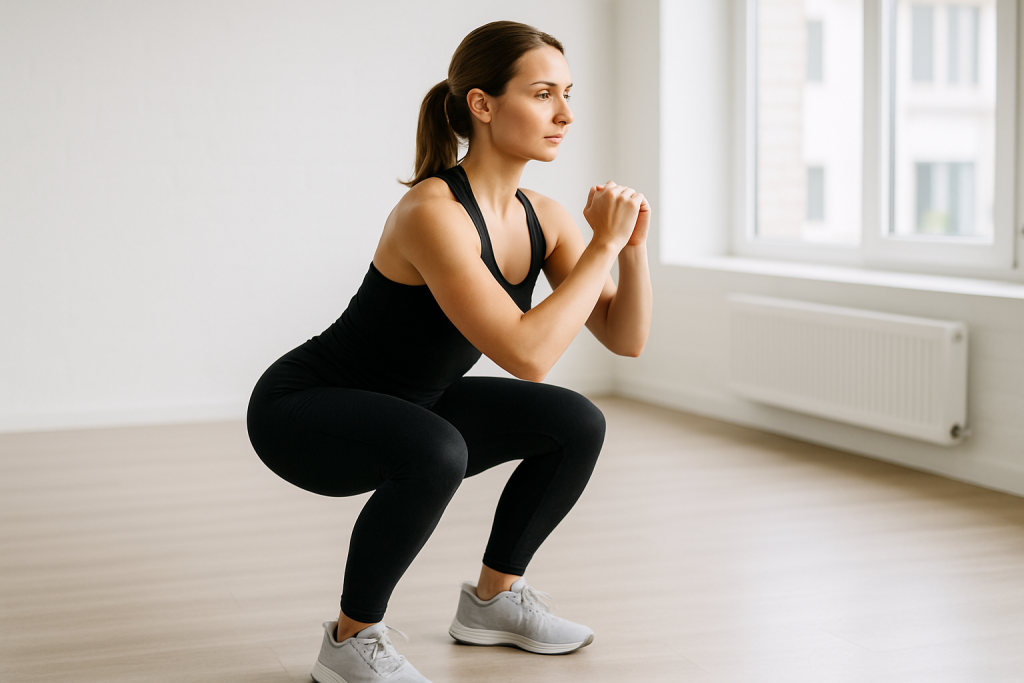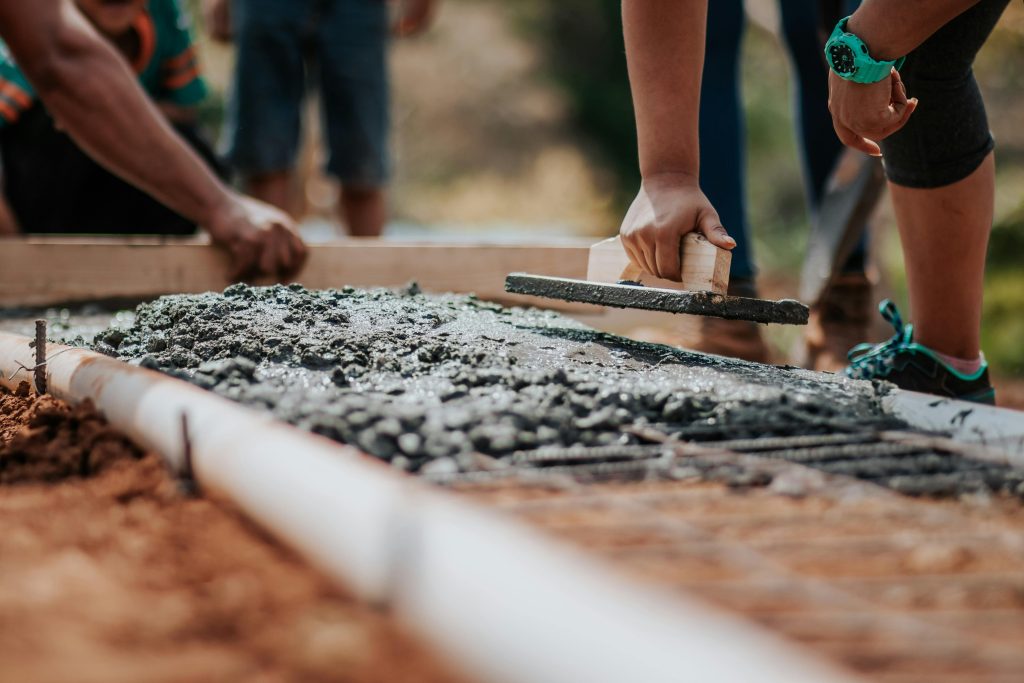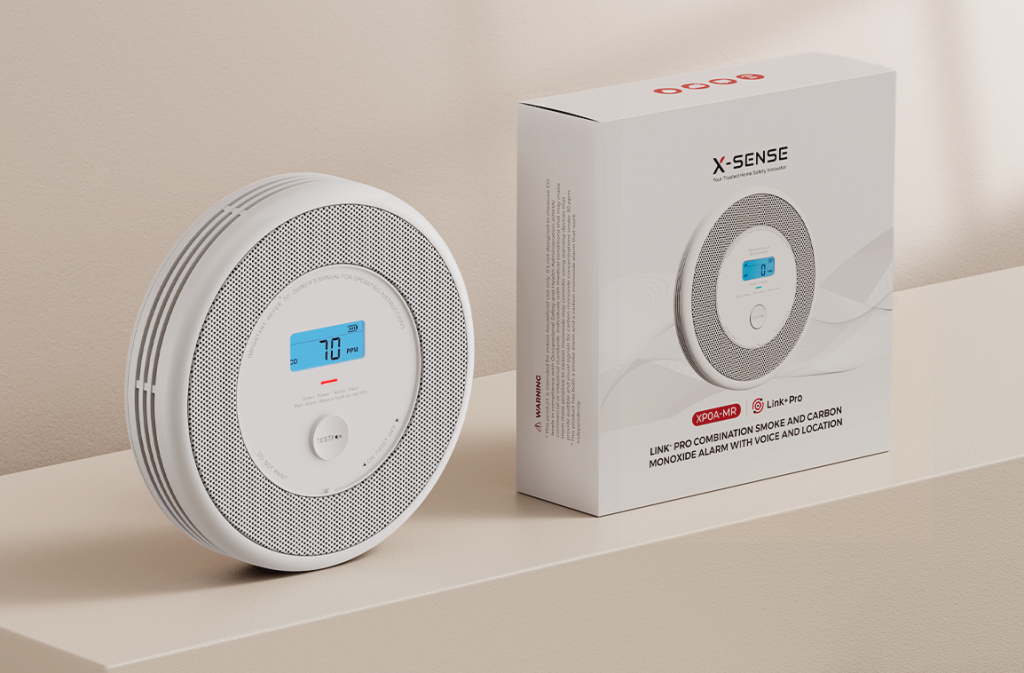When most people think about squats, they picture building strong legs or shaping glutes. But squats are more than just a leg exercise, they also have an effect on the pelvic floor, the group of muscles that sit at the base of your pelvis. These muscles are important for bladder control, core stability, and even sexual health, yet they don’t always get the attention they deserve.
Lately, there’s been growing interest in whether common exercises, like squats, can strengthen the pelvic floor. Some trainers recommend them as a natural way to engage these muscles, while others warn that poor form or too much weight could do more harm than good. So, do squats actually help the pelvic floor, or is it a fitness myth?
This article breaks down what really happens to the pelvic floor during a squat, the potential benefits, and the situations where caution is needed.
What Does Science and Expert Opinion Say?
Research suggests that squats can have a positive impact on the pelvic floor, but the effect depends on how they are performed and the individual’s health status. During the lowering phase of a squat, the pelvic floor muscles lengthen and stretch. On the way back up, these same muscles contract to help stabilize the body. This natural cycle of stretching and contracting is similar to how the pelvic floor functions in daily life, which is why many physiotherapists consider squats a functional way to train these muscles.
Several studies highlight that squatting can improve pelvic floor strength, coordination, and endurance, particularly when combined with other exercises such as Kegels or diaphragmatic breathing. Some evidence also suggests benefits for women experiencing mild urinary incontinence, as well as those looking to prevent pelvic floor issues later in life.
That said, experts also caution that not everyone will respond the same way. A person with a very tight or overactive pelvic floor may find squats uncomfortable or even aggravating. Likewise, improper technique such as holding the breath, leaning too far forward, or using heavy weights before building a foundation can increase pressure on the pelvic organs instead of supporting them.
In short, the consensus among health professionals is that squats can support pelvic floor health when practiced with proper form and appropriate intensity, but they are not a universal solution.
Benefits of Squatting for Pelvic Floor
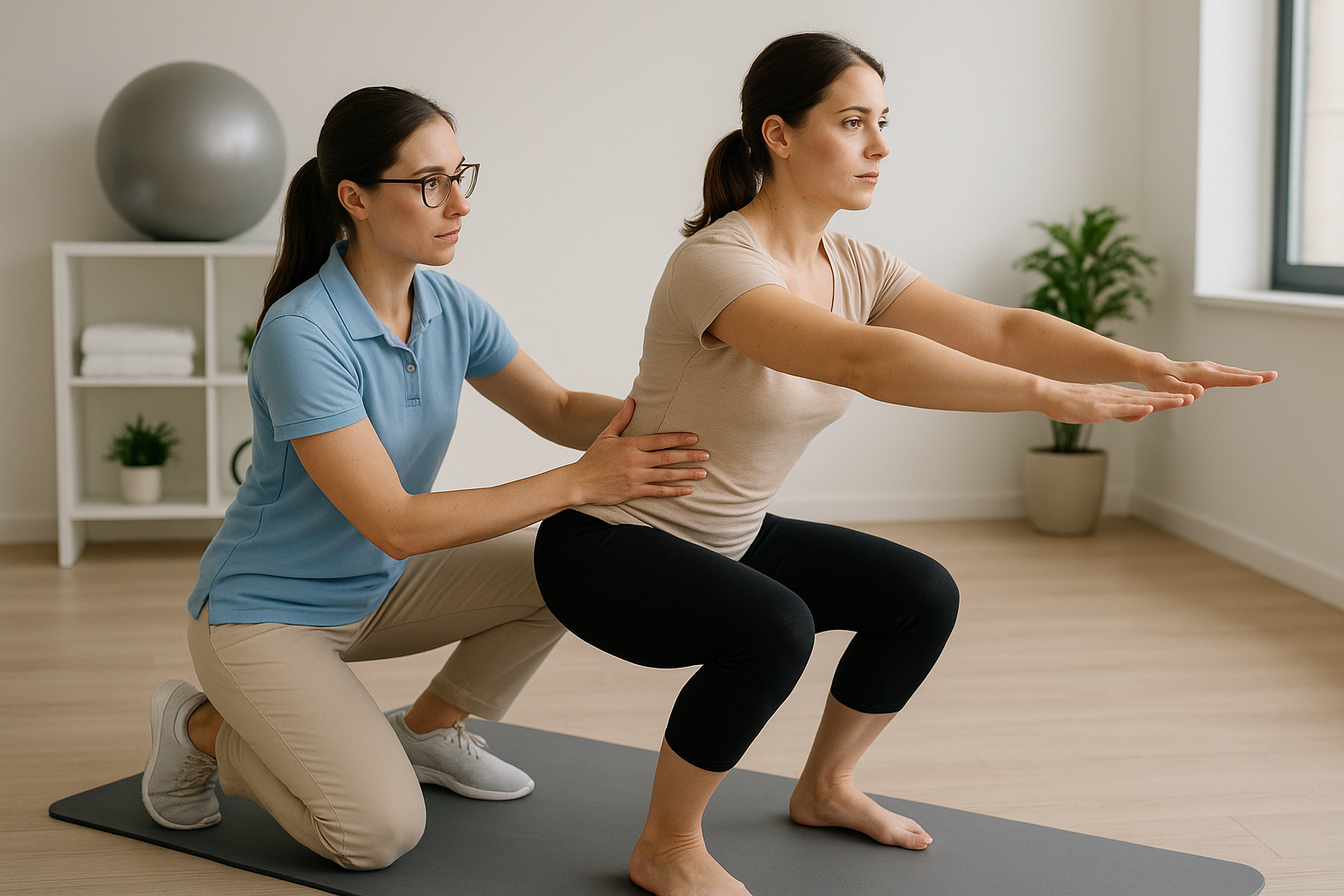
Squats are often called a “functional exercise” because they mimic movements we perform every day, such as sitting and standing. This makes them especially useful for strengthening the pelvic floor in ways that carry over into real life.
1. Strengthening and Coordination
A study published in the Journal of Strength and Conditioning Research (2015) found that deep squats naturally activate the pelvic floor muscles along with the glutes and core. This coordinated activation helps the pelvic floor work in harmony with other stabilizing muscles, improving overall core function and reducing the risk of weakness or dysfunction.
2. Support for Bladder Control and Incontinence
Research in Neurourology and Urodynamics (2018) reported that functional movements like squats, when combined with pelvic floor training, may reduce symptoms of stress urinary incontinence in women. By improving both muscle strength and endurance, squats can contribute to better bladder control over time.
3. Circulation and Mobility
Because squats involve both the hips and pelvis, they improve blood flow in the lower body and help maintain mobility in the pelvic region. Improved circulation supports tissue health, while mobility ensures the pelvic floor muscles can both contract and relax effectively.
4. Pregnancy and Postpartum Benefits
For pregnant women, squatting is often recommended as part of preparation for labor, as it helps lengthen and release the pelvic floor muscles. A review in the Journal of Perinatal Education (2014) noted that upright positions, including squatting, may facilitate an easier delivery by opening the pelvic outlet. After childbirth, gentle squatting (when cleared by a healthcare provider) can support recovery and help rebuild pelvic floor strength.
5. Posture, Core Stability, and Recovery
Squats also contribute to better posture by engaging the diaphragm, abdominal wall, and pelvic floor together. This synergy is important, since the pelvic floor is not an isolated muscle group but part of the body’s overall “core canister.” Strengthening this system may reduce lower back pain and improve daily movement efficiency.
And for those focused on recovery and long-term performance, pairing pelvic floor–friendly exercises with tools that support muscle growth and repair can make a real difference. For example, MK-677 (Ibutamoren) has been studied for its role in stimulating growth hormone release, which supports tissue repair and muscle recovery. Similarly, Ipamorelin sublingual may encourage natural regenerative processes, making them an interesting complement for individuals looking to optimize overall wellness alongside functional training like squats.
Risks or Limitations: When Squats Might Not Help
While squats can be highly beneficial, they are not the right solution for everyone. In some cases, the movement may place unwanted pressure on the pelvic floor or worsen existing issues if performed incorrectly.
1. Poor Technique and Excessive Pressure
Holding your breath during squats (the “Valsalva maneuver”) or loading too much weight too soon can increase intra-abdominal pressure. This may push downward on the pelvic floor, which is especially risky for people with pelvic organ prolapse or weak connective tissue support.
2. Tight or Overactive Pelvic Floor
Not all pelvic floor problems come from weakness. Some individuals have muscles that are already tight or overactive. In these cases, squats may feel uncomfortable, cause pain, or even increase tension rather than providing relief.
3. Postpartum or Post-Surgery Recovery
After childbirth or pelvic surgery, tissues need time to heal. Jumping straight into deep squats may slow recovery or contribute to complications. Most physiotherapists recommend gentle rehabilitation exercises first, with gradual progression into squatting once clearance is given by a healthcare provider.
4. Pelvic Organ Prolapse
People with prolapse should approach squats with caution, especially weighted versions. Depending on severity, modifications like partial squats, wall squats, or chair-assisted squats may be safer options. Working with a pelvic health physiotherapist can help ensure movements support recovery instead of adding strain.
5. General Discomfort or Pain
Squats should never cause sharp pain in the pelvis, hips, or lower back. Persistent discomfort may be a sign of poor form, muscle imbalance, or an underlying condition that requires professional evaluation.
How to Squat Safely for Pelvic Floor Health
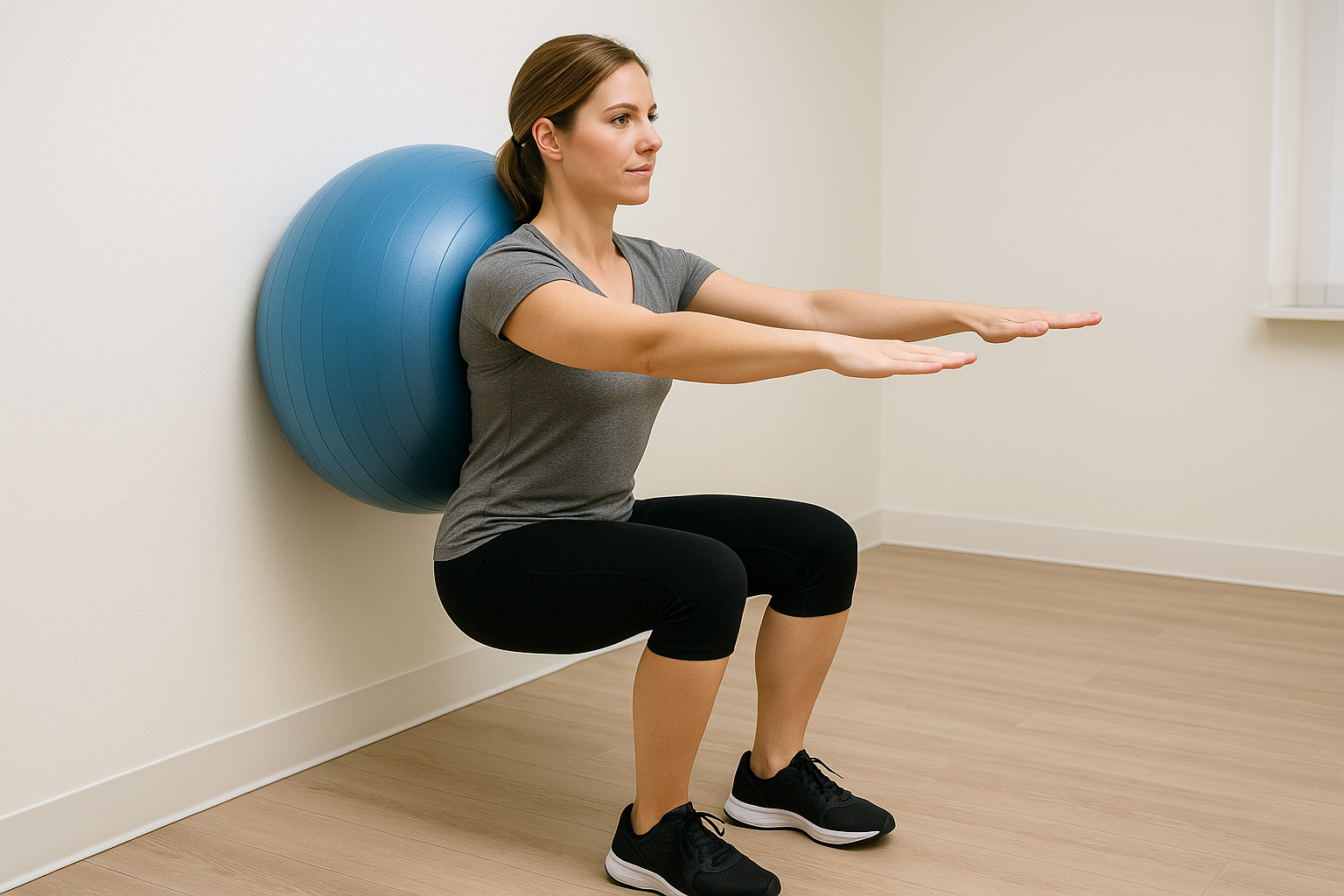
The key to making squats supportive instead of stressful for the pelvic floor lies in proper technique and mindful adjustments. Here are some evidence-based strategies recommended by physiotherapists and strength coaches:
1. Focus on Posture and Alignment
- Keep a neutral spine rather than tucking the pelvis under or excessively arching the lower back.
- Position your feet about hip- to shoulder-width apart and allow your toes to turn out slightly if that feels more natural.
- Make sure your knees track in line with your toes, avoiding collapse inward.
2. Coordinate Your Breathing
Breathing patterns can make or break pelvic floor safety. Inhale as you lower into the squat to allow the pelvic floor to lengthen, then exhale as you rise, gently engaging your pelvic floor and core. This prevents excessive downward pressure and builds better coordination.
3. Control Depth and Tempo
Not everyone needs to squat “ass to grass.” Instead, lower only as far as you can while maintaining comfort and control. A slower tempo lowering for three to four seconds before standing up gives the pelvic floor time to activate without strain.
4. Start Bodyweight, Then Progress
Master bodyweight squats before adding resistance. Once comfortable, you can progress to light weights, resistance bands, or goblet squats. Avoid heavy barbell squats until you are confident in technique and cleared of any pelvic floor issues.
5. Combine with Pelvic Floor Engagement
Adding a gentle pelvic floor contraction (similar to a Kegel) at the bottom of the squat, then relaxing as you rise, can help strengthen coordination between these muscles and the larger core system.
6. Modify When Needed
If traditional squats feel uncomfortable, try supported variations:
- Wall squats with a stability ball
- Chair squats to practice range of motion safely
- Mini-squats for those with prolapse or early postpartum recovery
These variations reduce strain while still training the muscles involved in safe movement patterns.
Complementary Exercises and Approaches
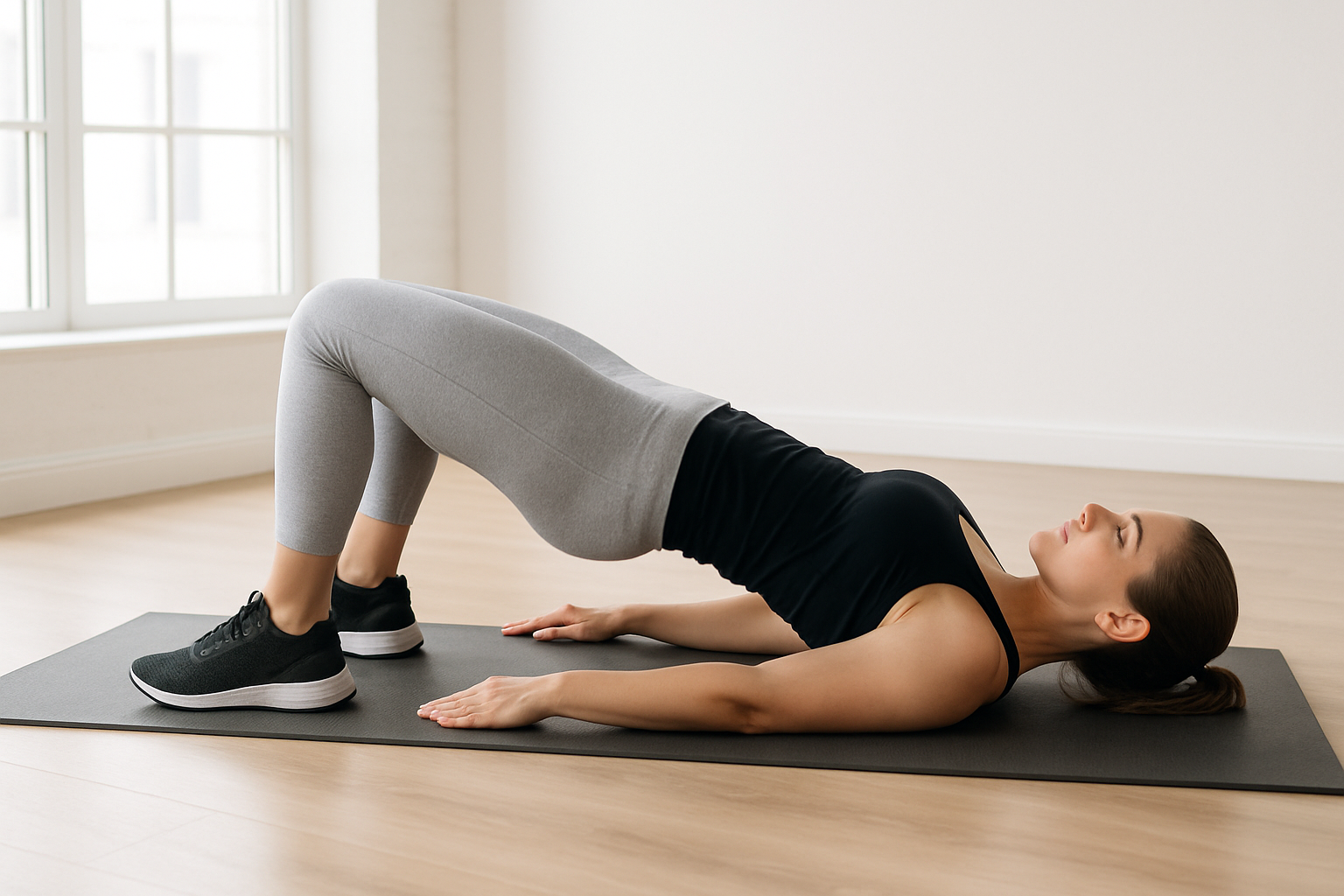
While squats can be valuable for the pelvic floor, they work best as part of a balanced program that addresses strength, flexibility, and breathing. Adding complementary exercises ensures the pelvic floor is trained to contract, relax, and coordinate with the rest of the body.
1. Kegel Exercises
Often called the “gold standard” of pelvic floor training, Kegels target the muscles directly. When performed alongside squats, they create a stronger mind–muscle connection and improve the ability to engage the pelvic floor at the right moments.
2. Glute Bridges
This exercise not only strengthens the glutes but also gently activates the pelvic floor. When paired with deep, controlled breathing, bridges can improve hip stability and reduce strain on the lower back.
3. Diaphragmatic Breathing
The diaphragm and pelvic floor work together as part of the core. Practicing deep belly breathing helps the pelvic floor learn to relax and lengthen, reducing tension and promoting better coordination during squats or other movements.
4. Side-Lying Leg Lifts and Clamshells
These exercises strengthen the hip stabilizers, which in turn support proper pelvic alignment. Stronger hips often mean less pressure is placed on the pelvic floor during daily activities.
5. Professional Guidance
For individuals recovering from childbirth, dealing with prolapse, or experiencing chronic pelvic discomfort, working with a pelvic health physiotherapist can provide tailored strategies. They may recommend modifications or progressive programs that blend functional movements, like squats, with targeted rehabilitation.
6. Supporting Recovery and Regeneration
Consistency in training is key, but recovery is just as important. Some people choose to pair functional exercise with research-backed compounds that support growth and repair. For example, MK-677 (Ibutamoren) has been studied for its ability to stimulate growth hormone release, which plays a role in muscle recovery and tissue health. Similarly, Ipamorelin sublingual tablets may support regenerative processes and complement an active lifestyle aimed at improving pelvic floor function.
Practical Tips / Quick-Start Guide
If you’re new to pelvic floor–friendly squatting, here are some simple steps to get started:
1. Begin with Bodyweight
Practice squats without added resistance until your form feels comfortable and controlled. Mastering the basics reduces the chance of placing unnecessary stress on the pelvic floor.
2. Pay Attention to Breathing
Inhale as you lower into the squat, allowing the pelvic floor to lengthen. Exhale as you stand back up, engaging the core and pelvic floor gently. This rhythm keeps pressure balanced.
3. Start Small, Build Up
Aim for 2–3 sets of 8–10 repetitions, two to three times per week. Over time, increase to deeper squats or add light resistance as your strength improves.
4. Mix in Complementary Moves
Add bridges, Kegels, and breathing drills to reinforce pelvic floor coordination. These exercises train the muscles in different ways and provide a well-rounded approach.
5. Modify When Needed
If full squats feel uncomfortable, try chair squats, mini-squats, or wall-supported versions. Comfort and control should come before depth or load.
6. Listen to Your Body
Discomfort, heaviness in the pelvic area, or increased leakage are signs to pause and reassess. If symptoms persist, consult a pelvic health professional.
7. Support Recovery
Muscles, including the pelvic floor, adapt best when recovery is prioritized. Staying hydrated, eating nutrient-dense foods, and exploring recovery aids such as MK-677 (Ibutamoren) or Ipamorelin sublingual tablets may further assist in maintaining balance between training and tissue repair.
Conclusion
Squats can support pelvic floor health by strengthening muscles, improving posture, and enhancing core stability. However, they are not a universal fix people with prolapse, tightness, or those recovering from childbirth may need modifications or guidance. When performed with good form, controlled breathing, and gradual progression, squats can be a safe and effective addition to pelvic floor training.


